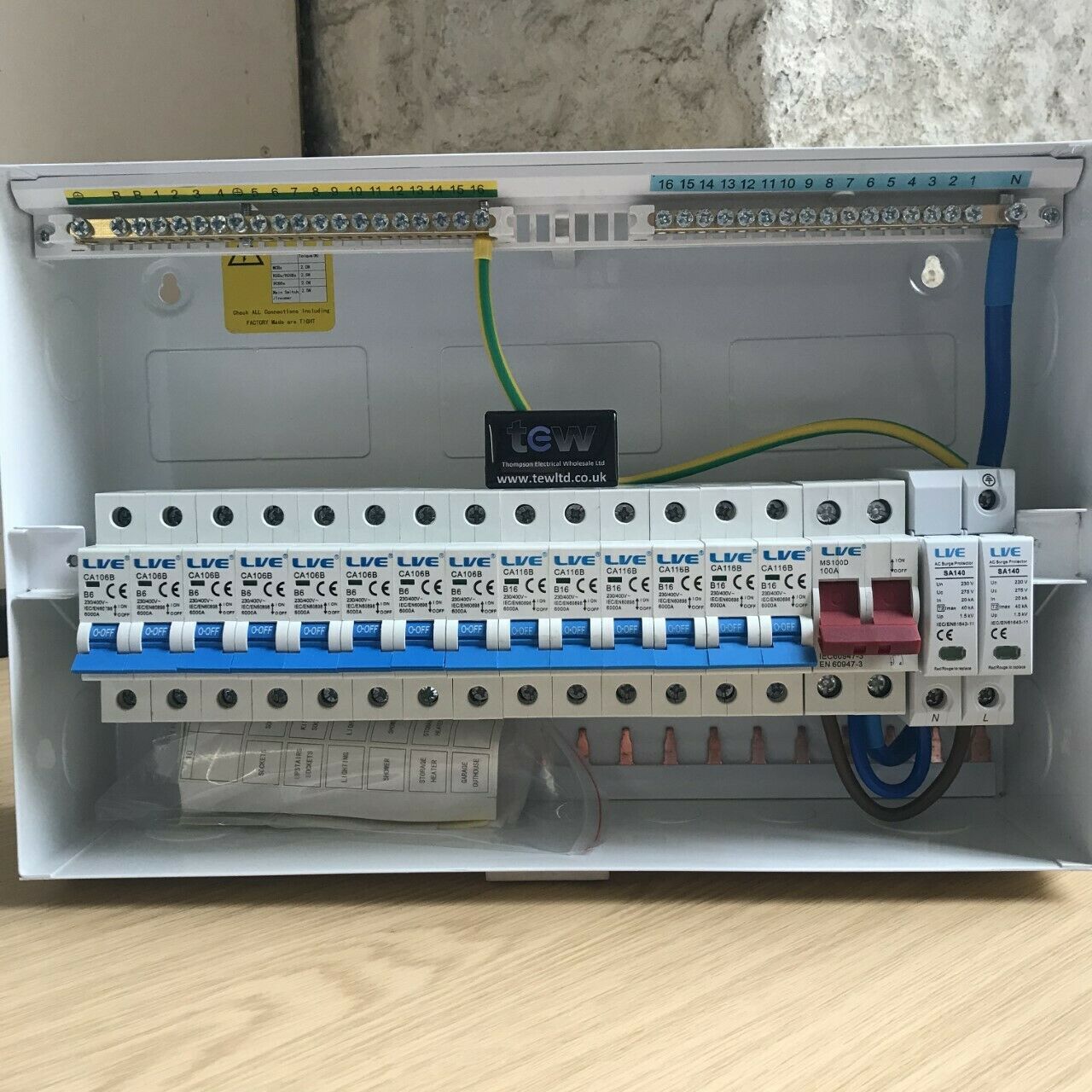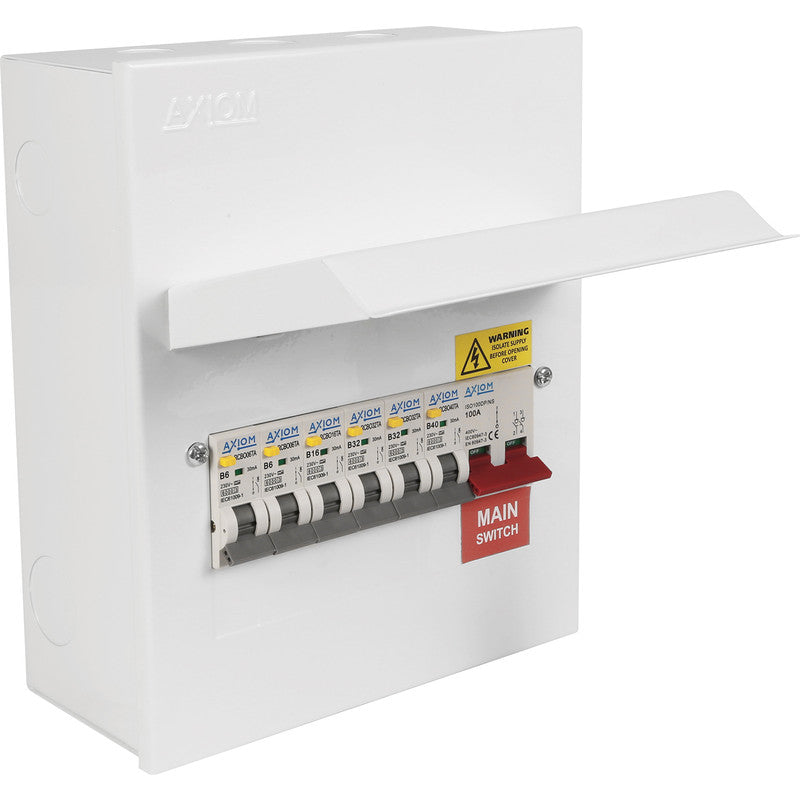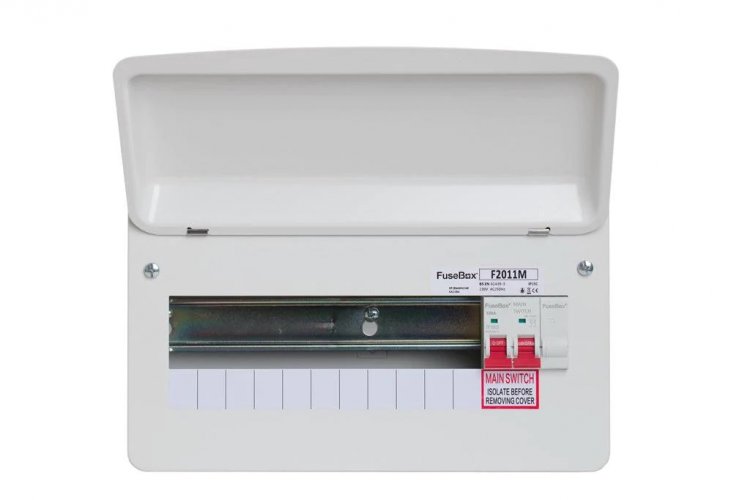Top Features to Look for in High-Quality RCBO CONSUMER UNITS
Top Features to Look for in High-Quality RCBO CONSUMER UNITS
Blog Article
The Role of Customer Units in Effective Energy Monitoring Equipment
Customer devices are integral to effective energy monitoring systems, serving as the primary circulation points for electrical power within frameworks. The introduction of smart innovations has even more improved their performance, enabling for real-time data tracking and nuanced energy usage analysis.
Recognizing Customer Devices

Recognizing the duty of customer units starts with recognizing their important feature in safeguarding electrical systems. By isolating faults within details circuits, customer units stop widespread failures and potential fire dangers. This isolation is attained through using breaker that journey or integrates that impact when a fault is spotted, consequently reducing off the electric flow to the affected circuit.
Moreover, customer units help with the orderly distribution of power, improving the performance of energy usage. They enable the systematic management of electric loads, which can be especially important in commercial and industrial setups where demand can fluctuate considerably. Correctly conserved customer units add to the long life of electrical systems and help in minimizing downtime created by electrical failures, inevitably sustaining the seamless operation of energy-dependent facilities.
Smart Technologies Combination

A crucial advantage of clever customer systems is their capability to leverage progressed algorithms and artificial intelligence for predictive analytics. This enables preemptive changes based on usage patterns, weather prediction, and other variables, significantly boosting general effectiveness. Moreover, clever customer devices assist in need action programs, where energy usage can be dynamically readjusted during peak durations to support the grid and reduce expenses.
The assimilation of renewable resource resources, such as solar and wind, is additionally structured through wise customer systems. By wisely handling the intermittency of these sources, these units make sure a well balanced and trusted power supply. In addition, clever customer units improve customer engagement by offering comprehensive understandings and remote capabilities with mobile applications, promoting a much more proactive approach to energy conservation and sustainability.
Surveillance Energy Usage
Structure on the capabilities of clever innovations combination, keeping track of power usage becomes an important focus within energy management systems. By leveraging innovative metering facilities (AMI), real-time data on power use can be gathered at granular degrees, offering beneficial understandings right into consumption patterns and peak need periods.
Smart meters and Web of Points (IoT) gadgets play a crucial role in this surveillance process. These gadgets can track energy use in real-time, sending data to central systems for analysis. The collected information is after that refined through innovative algorithms to identify anomalies, predict future intake, and recommend optimization strategies. In addition, cloud-based options offer scalable systems for storing and examining huge datasets, helping with remote tracking and control.
The integration of these technologies not only encourages consumers with thorough details about their power usage but likewise sustains utility providers in managing load distribution extra successfully. Ultimately, specific and continual monitoring is vital for achieving energy effectiveness, price financial savings, and sustainability objectives within power administration systems.
Optimizing Appliance Usage

One reliable approach entails determining height and off-peak hours to change energy-intensive tasks, such as washing or dishwashing, to times when power need is reduced. This not only minimizes stress on the grid yet additionally profits from reduced energy tolls. In addition, incorporating machine understanding formulas her response permits predictive maintenance, making sure home appliances run at ideal efficiency and this content extending their lifespan.
Energy monitoring systems can likewise integrate user-specific choices and habits to customize home appliance use routines. Clever lights systems can adjust illumination based on tenancy and natural light schedule, while A/c systems can keep convenience levels without excessive energy use.
Supporting Sustainability
Promoting sustainability within energy monitoring systems includes not only boosting effectiveness however likewise cultivating environmentally accountable techniques. Consumer units are integral to this process, as they offer real-time information and control devices that enable individuals to monitor and lower their energy intake. By leveraging advanced innovations, consumer units can identify energy-saving opportunities and promote the integration of renewable resource resources like solar and wind power.
One important facet of promoting sustainability is informing consumers on the benefits of liable energy use. With detailed understandings supplied by customer devices, individuals can make informed choices that decrease their carbon footprint. These units can recommend ideal times for operating high-energy devices based on grid need and renewable power availability, therefore decreasing reliance on fossil gas.
Furthermore, customer units sustain the adoption of smart grid modern technologies, which enhance the overall effectiveness and dependability of power circulation. By making it possible for two-way interaction in between customers and energy companies, these systems can dynamically adapt to energy needs, reducing waste and advertising the use of lasting energy practices.
Verdict
Customer devices, as important elements of energy monitoring systems, significantly boost electric security and effectiveness within structures via circuit defense and wise modern technology integration. In addition, the incorporation of renewable power resources promotes lasting techniques, contributing to reduced overall energy consumption and reduced carbon impacts.
Advances in wise modern technologies have changed the capacities of energy management systems, specifically through the combination of clever customer units.Structure on the capabilities of clever technologies integration, checking energy intake comes over here to be an important focus within energy monitoring systems.Reliable device use optimization is a critical element of power administration systems, aiming to improve effectiveness and decrease unneeded energy usage.Customer units, as integral parts of energy management systems, substantially improve electric safety and security and performance within structures through circuit protection and clever innovation assimilation. Furthermore, the unification of eco-friendly energy sources promotes sustainable methods, contributing to reduced total power usage and lower carbon impacts.
Report this page